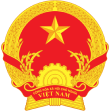Overview of VN-Japan strategic partnership
VGP – Viet Nam-Japan relationship has been growing intensively ever since the two nations established their diplomatic relations in September 1973.
In recent years, leaders of the two nations exchanged a number of official visits and reached crucial agreements to boost bilateral ties.
In April 2009, Party General Secretary Nong Duc Manh and Japanese PM Aso Taro jointly issued the Japan-Viet Nam Joint Statement “Toward a Strategic Partnership for Peace and Prosperity in Asia”.
PM Nguyen Tan Dung and PM Naoto Kan signed on October 31, 2010 a Joint Statement on the all-sided approach to develop the Viet Nam-Japan strategic partnership for peace and prosperity in Asia on the occasion of the official visit of Japanese PM to Viet Nam.
In October 2011, on his working visit to Japan, PM Nguyen Tan Dung signed the Japan-Viet Nam Joint Statement on the Actions Taken under Strategic Partnership for Peace and Prosperity in Asia.
Economically, Japan is the top trade partner and third largest importer of Viet Nam.
Two-way trade between the two countries valued at US $21.181 billion in 2011 and US $12 billion in the first half of 2012.
The two countries have set the goal of achieving a two-way trade turnover of US $40 billion by 2020.
Japan has recognized Viet Nam as a market economy.
Japan has become the biggest Foreign Direct Investment (FDI) provider for Viet Nam. According to the Ministry of Planning and Investment, the total registered capital of Japanese businesses in Viet Nam hit US $4.86 billion in the first nine months of 2012, accounting for more than 49% of the nation’s total FDI.
Japan is also the largest Official Development Assistance (ODA) donor to Viet Nam. Since 1992, the nation has pledged around US $16 billion for Viet Nam.
In 2011, though still dealing with earthquake and tsunami consequences, Japan still provided the highest ODA of US $2.7 billion for Viet Nam.
In term of education, the number of Vietnamese apprentices to Japan reached 30,000 in 2006-2011. Currently, there are around 4,000 Vietnamese students studying in Japan.
Regarding tourism, Japan has been one of leading source markets of Viet Nam’s tourism with 400,000 arrivals reported each year, ranking 5th in this area. In the first eight months of 2012, the number of Japanese tourists to Viet Nam was 376,324, a year-on-year increase of 18.9%.
The Vietnamese Government has partnered with Japan in building a nuclear power plants in Ninh Thuan Province. In addition, the two nations confirmed to push up cooperation in race earth exploitation in Viet Nam.
In science and technology, in September 2012, Japan financed ¥ 54 billion in ODA for Viet Nam to build Viet Nam Space Center, which is the most modern center of its kind in Southeast Asia when completed by 2020.
By Thuy Dung

